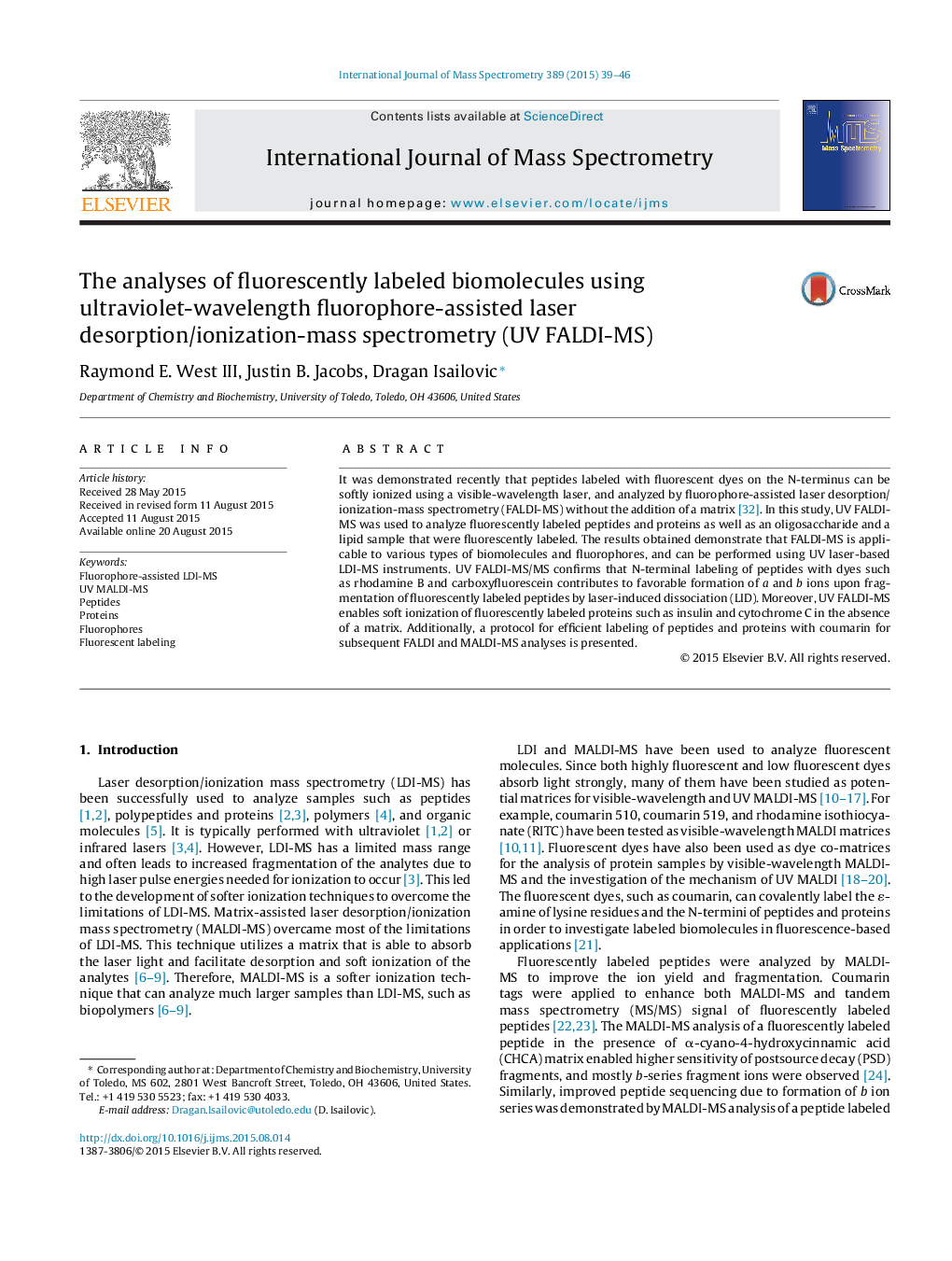| Article ID | Journal | Published Year | Pages | File Type |
|---|---|---|---|---|
| 1192770 | International Journal of Mass Spectrometry | 2015 | 8 Pages |
•UV LDI-MS was used to analyze several classes of fluorescently labeled biomolecules.•Biomolecules labeled with various fluorophores were softly ionized by UV FALDI-MS.•UV FALDI-MS/MS of N-terminally labeled peptides confirmed the favorable formation of a and b fragment ions.•Fluorescently labeled proteins were analyzed by UV FALDI-MS without a matrix.•A protocol for efficient labeling of peptides and proteins with coumarin is presented.
It was demonstrated recently that peptides labeled with fluorescent dyes on the N-terminus can be softly ionized using a visible-wavelength laser, and analyzed by fluorophore-assisted laser desorption/ionization-mass spectrometry (FALDI-MS) without the addition of a matrix [32]. In this study, UV FALDI-MS was used to analyze fluorescently labeled peptides and proteins as well as an oligosaccharide and a lipid sample that were fluorescently labeled. The results obtained demonstrate that FALDI-MS is applicable to various types of biomolecules and fluorophores, and can be performed using UV laser-based LDI-MS instruments. UV FALDI-MS/MS confirms that N-terminal labeling of peptides with dyes such as rhodamine B and carboxyfluorescein contributes to favorable formation of a and b ions upon fragmentation of fluorescently labeled peptides by laser-induced dissociation (LID). Moreover, UV FALDI-MS enables soft ionization of fluorescently labeled proteins such as insulin and cytochrome C in the absence of a matrix. Additionally, a protocol for efficient labeling of peptides and proteins with coumarin for subsequent FALDI and MALDI-MS analyses is presented.
Graphical abstractFigure optionsDownload full-size imageDownload high-quality image (72 K)Download as PowerPoint slide
